Nutrition
‘A drizzle, a dollop and crunch’: The secret to a plant-based diet
I I grew up in a multicultural family – my father is Norwegian, my mother is Bulgarian and Danish – and I spent my early years in Tanzania, where, in the 1980s, cooked food did not exist. If we wanted a pizza, we made everything – from the base to the sauce – ourselves.
My mother made fresh butter and yogurt, and I spent a lot of time with my «green thumb» grandmother who lived in Sweden. When we weren’t at the local farmers market, we were in the garden, picking, or making seasonal jams. So this hands-on approach to food grew in me.
My transition to a plant-based lifestyle was driven by health issues, including polycystic ovary syndrome (PCOS) and endometriosis as I discovered that what I ate had a huge impact on my health. I became the body and the mind, and that’s what made me run. health centers in the south of Spain. I then moved to London and wrote my first cookbook, Happy Food, and started cooking and running my Retreat Chef school.
Everyone is different, but I think it can help everyone’s health to include more plants in their diet. The more variety, color, whole foods and fruits and vegetables you eat, the better for you in the long run.
There are many good tools that are not used properly. There is a world of gluten-free plants, such as buckwheat, millet, teff, quinoa, which are nutritious and not talked about enough. There are over 40,000 varieties of rice cultivated but most of us only know five or six varieties. Even millet, for example, which is a small grain, and often what I call «budgie food», is an insignificant ingredient that we should include in our dishes.
The «free» industry has started, and while it’s great for those looking for a different kind of food, unfortunately the variety offered includes a lot of processed products. But it is very important that we try to use as many different products as possible. You must have 30 types of vegetables per week, such as peppers, spices and lentils.
If you are new to a plant-based diet or want to incorporate it into your life, the first thing I recommend is to sign up for a new fruit and vegetable box. There are many to choose from, they introduce you to produce that you might not normally buy, and they will encourage you to «think outside the box» in the kitchen.
Contrary to popular belief, eating a plant-based diet does not mean eating less. In fact, you should eat larger portions. And you don’t have to give up animal products completely. If everyone ate more plant foods at home and saved animal products for special occasions, this would be an important step in the right direction.
Ten years ago, it was a «thing» to visit a restaurant that was vegan and plant-based. Now some people won’t touch vegan food out of pure protest. But I think the problem today is that there is a huge emphasis on writing, which is very embarrassing, and this stops people.
If you make hummus dip with caramelised onions, you don’t have to label it vegan. We need to start calling dishes what they are.
The belief that plant-based foods are unhealthy is a common misconception. There are many ways to transform your dishes at home. What I love most about cooking from scratch is that it gives you control over what goes into your dishes and allows you to create meals that make you feel good. The best plant-based foods are fuss-free, simple, easy, inexpensive, and speak for themselves.
My favorite thing to do while working at a resort is to have a freezer attack. I like to take everything out of my fridge, including the little sad vegetables that have been left out all week, and make something delicious. Usually there is something like curry or stir fry. Although it can be a challenge to put everything together, most of the time, these are my most creative and delicious meals.
Another thing I teach is the principle of adding «liquid, pop and crunch» to plant-based dishes. This may sound sweet, but think of pumpkin soup – it’s a classic but with one side. Now imagine that same soup with roasted pumpkin seeds, a drizzle of pesto on top, and a dollop of yogurt. Smart, right?
By adding these ingredients and flavors to regular dishes, you can elevate your plant-based recipes to the next level.
#drizzle #dollop #crunch #secret #plantbased #diet
Nutrition
Psilocybin’s mental health benefits may include improved sleep
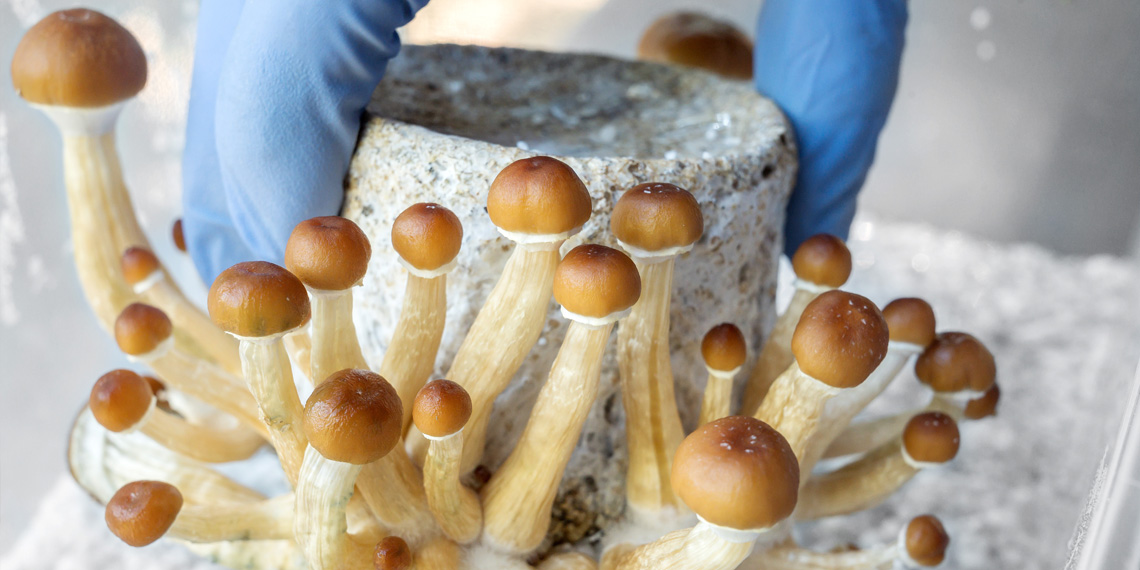
Research into psilocybin’s promise as a mental health treatment is expanding beyond mood disorders. In a new study, researchers found that participants who consumed a psychedelic substance in therapy reported a reduction in stress and an improvement in their sleep quality. The findings were published in Current Reports in Psychiatry.
Psilocybin is a natural compound found in certain types of mushrooms, often called «magic mushrooms.» When ingested, psilocybin is converted in the body to psilocin, which interacts with serotonin receptors in the brain. This interaction leads to changes in perception, perception and perception. These effects are often described as psychedelic, producing vivid visual and auditory experiences, changes in self-awareness, and deep emotional or spiritual understanding.
Scientists are particularly interested in psilocybin because of its potential to treat mental health conditions such as depression, anxiety and post-traumatic stress disorder. Unlike conventional antidepressants, which can take weeks to show effects and often require long-term use, psilocybin has been shown in early studies to produce rapid and lasting improvement in mood after a single session. or just two. This has led researchers to investigate its mechanisms of action.
The new study, led by Matthew J. Reid and Robin Carhart-Harris, aimed to better understand whether psilocybin improves the quality of sleep and whether early sleep disturbances influence the antidepressant effects of psilocybin.
«My research is focused on understanding the relationship between sleep disruption and mental health, and how sleep how does it fit into the therapeutic process.»
«In particular, I’m interested in how we can use sleep as a new therapeutic tool to replace medical treatments or improve their effectiveness. Exploring how this relationship can be expanded and intervened while psychedelic seemed natural, and I was surprised that no one had examined how psilocybin affects long-term sleep.
The researchers recruited 653 participants who planned to attend psilocybin-guided sessions, such as retreats or ceremonial experiences, making this one of the largest studies ever to investigate the use of psilocybin. of psilocybin in natural, non-clinical settings.
About 60 percent of participants encountered the possibility of major depression, with the average level of depression falling into the mild to moderate range. Sleep disturbances were nearly universal, with all participants reporting some sleep-related issues. Insomnia, especially difficulty falling asleep, was the most common sleep complaint, followed by hypersomnia and early awakening. Notably, for 26% of participants, sleep problems were their most severe depressive symptom.
«We were very surprised to find that sleep symptoms appeared to moderate the level of depressive symptoms among this group,» Reid told PsyPost. «Sleep disturbance is a frequent symptom of depression, but here, sleep disturbance was the strongest symptom of depression—even stronger than symptoms such as ‘ feeling down or sad,’ which we normally associate with depression.»
Consistent with previous studies, researchers found that psilocybin reduced depressive symptoms in participants. By two weeks after the session, depression symptoms had decreased by an average of 33%, and by four weeks, they had decreased by more than 50%. These improvements were more pronounced in participants who started with severe depression.
Sleep disturbances also improved after the use of psilocybin, although the changes were less pronounced than those observed for depression. Participants reported a modest but statistically significant reduction in problems such as insomnia and early awakening. These improvements were visible in two weeks and remained stable for four weeks.
«There seems to be a small but reliable improvement in sleep after the administration of psilocybin in the treatment area,» Reid explained. It is still unclear whether this is due to the drug itself or something indirect, and we cannot tell that from the data.
An important finding was the relationship between basic sleep disturbances and depression outcomes. Participants who had severe sleep problems at baseline were less likely to find relief from depression, even if their depression symptoms improved.
For example, people with insomnia or hypersomnia were less likely to recover completely. This suggests that sleep disturbances may interfere with the therapeutic effects of psilocybin, which may be an obstacle to obtaining optimal results.
«Those with poor sleep seem to benefit less from psilocybin administration, which may have important implications for future clinical applications,» Reid told PsyPost. «But it’s not clear why this happens, and we need to study this in more detail.»
Studies highlight the importance of sleep meditation as a factor in psilocybin-assisted psychotherapy. However, as with all research, there are limitations to consider.
The lack of a control group makes it difficult to isolate the effects of psilocybin from other factors, such as the supportive recovery environment or participants’ expectations. Similarly, natural settings have introduced differences in dosing, retreat protocols, and participant populations. Although this method improves the validity of the ecological study, it also complicates efforts to reach accurate conclusions about the effects of psilocybin.
Reid said: «It is important to remember that these results were obtained ‘in the field’ from people who voluntarily administered psilocybin. «This was not a controlled trial conducted in a laboratory setting, like a clinical trial, so we need to account for the potential bias, uncertainty, and low noise ratio inherent in this type of naturalistic research.»
The long-term goals of this research method are to «continue to explore what role sleep, if any, may play in the mechanisms of psychedelic therapy,» Reid explained. «We have several studies underway in that area and hope to share more findings soon.»
The study, «Preliminary Evidence of Sleep Improvement Following Psilocybin Administration, and Its Implications for the Treatment of Depression,» was written by Matthew J. Reid, Hannes Kettner, Tessa F. Blanken, Brandon Weiss, and Robin Carhart-Harris.
#Psilocybins #mental #health #benefits #include #improved #sleep
Nutrition
Studies show that text messages may not be as effective as reminders to fill medications
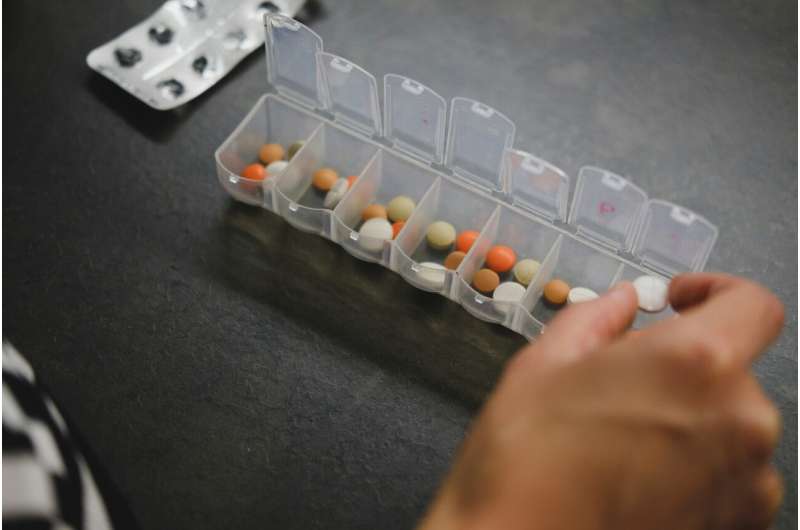

Credit: Unsplash/CC0 Public Domain
A study published in JAMA reveals text message reminders for patients who are late to refill their medications did not help improve their refills over a year.
The study enrolled more than 9,000 patients in a pragmatic clinical trial and included representation from a diverse population across subgroups, including women, Hispanics, and Spanish-speaking patients, all groups that would normally be represented by a limited method in clinical trials.
«There are many studies that focus on using technology to improve health care behaviors. However, it is unclear and poorly studied whether text message reminders are effective for a sustained period of time. , as they have become a common practice in health care settings,» said first author Michael Ho, MD, associate professor of medicine and cardiology at the University of Colorado School of Medicine at the University of Colorado Anschutz Medical Campus. .
«That’s one of the reasons we wanted to focus on text message reminders for medication refills in this study, which we hoped would also reduce serious health problems.»
Researchers compared different types of messaging strategies to standard care to improve medication adherence for chronic heart disease. Messages were provided when patients had a refill gap of more than seven days and were sent in English or Spanish based on patient preference.
«An important aspect of our research was to include representation from different cultures, since different cultures and experiences can shape the choice of communication methods and result in different technological methods,» said senior author Sheana Bull, Ph.D., MPH, professor. Emerita and consultant of the mHealth Impact laboratory at the Colorado School of Public Health at the CU Anschutz Medical Campus.
The research found adherence to fillings in the first three months improved by five percent and the median length of first voids decreased by about five days, meaning patients had more days five of their medicine supplies.
However, text message reminders were not effective in improving adherence to refills at 12 months, regardless of the type of message: standard messages, messages using persuasive communication techniques called behavioral techniques or behavioral patterns, as well as a chatbot. This was consistent across all genders and races, and there was no difference between different text messaging styles.
«Chronic health conditions are on the rise and managing these conditions often requires patients to take medications for a long time. It is important to know ways to help patients take their medications regularly to prevent these medical conditions. so that he doesn’t get worse,» adds Ho.
«Our study shows adherence to chronic heart medication was lower than 12 months, so we need to explore new ways to improve this, especially when more people are improve chronic health conditions.»
Researchers will next study if advanced digital technologies including machine learning and artificial intelligence can improve long-term behavior related to medication refills.
The research was conducted by a team at the CU Anschutz Medical Campus, including faculty from the CU School of Medicine, the Skaggs School of Pharmacy and Pharmaceutical Sciences and the Colorado School of Public Health.
Additional information:
P. Michael Ho et al, Patient Personal Data and Behavioral Models to Improve Adherence to Chronic Cardiovascular Medications, JAMA (2024). DOI: 10.1001/jama.2024.21739
Provided by CU Anschutz Medical Campus
Excerpt: Study shows text messages may not be effective as refill reminders (2024, December 3) Retrieved December 3, 2024 from https://medicalxpress.com/news/2024- 12-text-messages-ineffective-medication-refill.html
This document is subject to copyright. Except for any legitimate activity for the purpose of private study or research, no part may be reproduced without written permission. Content is provided for informational purposes only.
#Studies #show #text #messages #effective #reminders #fill #medications
Nutrition
Analyzing user behavior and content across channels can help protect data

By 2024, healthcare organizations experienced the most expensive cyber attacks, costing nearly $10 million.1 And with the proliferation of ransomware and piracy tools, healthcare will continue to be targeted by such attacks.
«[Threat actors] they try to extort payments from organizations. That’s a trend we’re seeing,» said Ryan Witt, Proofpoint’s vice president of industry solutions and chairman of the company’s healthcare consumer advisory board.
Chief information security officials are also concerned about data loss caused by insiders, compromised accounts and careless users with unsecured email. , remote work applications, cloud computing and productivity platforms.2
Advanced security measures are needed to protect patient information from AI-enhanced ransomware, phishing and insider threats and to ensure the integrity of healthcare systems. Understanding the current health threat landscape is the first step to adopting a human-centered, data security approach.
Protecting data starts with people
Today, attackers attack people, not technology. That’s where cybersecurity leaders should focus their attention and resources.
«The economy of cybercrime is based on how victims interact,» said Brian Reed, senior director of cybersecurity strategy at Proofpoint. «It’s a lot less hassle to go in and socially engineer a victim or design a hacking trap than it is to spend time and energy building, testing and releasing holiday spoilers.»
Reed estimates that in healthcare, like many other industries, about 80% of attacks focus on human factors rather than technical weaknesses. «Most of those data loss cases are good people making bad decisions,» he said. According to Reed, the most common such threats are:
- Ransomware attacks, which often include prompting to install a browser extension, click a link or download an application;
- Compromising commercial email, including covert attempts to get users to take action outside of their normal course of action; and
- Loss of data due to malicious, compromised or negligent individuals.
To prevent accidental and inadvertent data loss
Typically, cyber security refers to the ability to catch vulnerabilities, stop phishing attempts and identify social engineering attempts before they reach end users. However, the significant increase in endpoints and the proliferation of cloud computing across the healthcare environment and an ever-changing workforce that may include part-time workers and mobile nurses have increased the need for cloud solutions. data loss protection (DLP).
Evidence of 2024 Data Loss Zone the report said that 70% of respondents say that careless users are the main cause of data loss and breach of control.3 Image of Verizon 2024 Data Breach Investigation Report found that 68% of crimes involve «a harmless human element, such as someone falling for a social engineering attack or making a mistake.»4 To illustrate this point, a 2023 report from Tessian (now a Proofpoint company) found that about a third of employees send about two emails to the wrong recipient a year and a year.5
DLP solutions recognize that preventing data loss from the inside is just as important as stopping external access. Many methods use an advanced matching method to try to identify important data that may be accidentally or intentionally generated before it leaves the network. Advanced DLP goes a long way; large language models can look through billions of records and sort out important information by understanding the context and relationships between files and directories.
Joshua Linkenhoker, a Proofpoint business security consultant, said these models can scan e-mails or files being transmitted to identify links that may contain sensitive information. Even more powerfully, AI can be trained on human behavior to stop hard to catch mistakes like accepting the wrong email submission for an email recipient. Linkenhoker calls it «behavior-driven action.»
Get data output from email, cloud and endpoints
Real-time AI applications add a powerful role to automation. Every time an employee is guided to make the right choice about handling sensitive data, a potential breach of law is avoided.
Behavioral AI can also train users to think twice before transferring data to an unsecured cloud storage folder or sharing a sensitive file via OneDrive or SharePoint. Witt believes that cloud-based productivity systems designed specifically to share information have become a major threat to healthcare.
Reed acknowledged that it’s one thing to anticipate targeted cybercriminal movements, but it’s much harder to anticipate the performance, if not security, of overburdened healthcare workers.
Of course, he added, AI behavior can also stop strange behavior with bad intentions. When an unsuspecting user starts renaming important financial files «family pictures.zip,» moving them to a USB drive and deleting them from a local drive, it’s clear that this type of overreach is not guilty. And without the ability to use scalable AI to detect suspicious behavior, it’s difficult to identify inside actors.
With the increasing number of endpoints and monitoring stations, specialized information security solutions have increased. While a «security in depth» approach is important, the volume of data sources can make it more difficult for healthcare security analysts to analyze events in real time and understand actions. of people according to the context.
Evidence-based research has shown that nearly 70% of IT professionals surveyed rank visibility into sensitive data, user behavior, and external threats as the most important capabilities of malware prevention programs. data loss.6 It’s a complex problem because information security analysts need to see both depth and breadth at the same time, also known as visibility at scale.
When information flows from different sources are combined, health care organizations can go from protecting against known, commercial attacks to preventing the most advanced, designed and unanticipated operations. That provides the opportunity to use AI across information silos to achieve a real-time, 360-degree view of the threat environment.
«Now you have to go find the needle in the haystack,» Witt said. «You need that level of full visibility, that level of analytics, that level of AI that sees a small number of interactions…. You’re capturing a very small fraction of the total traffic, but it’s so small. it’s really important.»
Download the Proofpoint-HIMSS white paper on adopting a human-centered approach to healthcare data security Here.
References
1. IBM and Ponemon Institute. 2024. Cost of Information Crisis Report 2024. https://www.ibm.com/reports/data-breach.
2. Proofpoint and CyberEdge. 2024. 2024 site of data loss. https://www.proofpoint.com/us/resources/threat-reports/data-loss-landscape.
3. Ibid.
4. Verizon. 2024. Verizon Data Breach Investigation Report 2024. https://www.verizon.com/business/resources/reports/dbir/.
5. Evidence. 2024. To change DLP [eBook]. https://www.proofpoint.com/sites/default/files/e-books/pfpt-us-eb-rethinking-dlp.pdf.
6. Proofpoint and CyberEdge, 2024 site of data loss.
#Analyzing #user #behavior #content #channels #protect #data
-
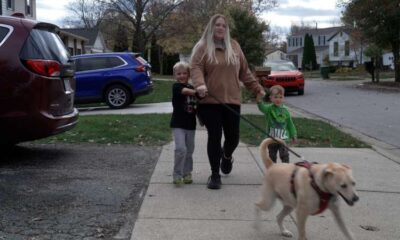
 Mental health1 año ago
Mental health1 año agoThe survey found that 56% say ‘alone time’ is important for mental health
-

 Health care1 año ago
Health care1 año agoIf you need a break to shut down during the holidays, you’re not alone, new research finds | CNN
-
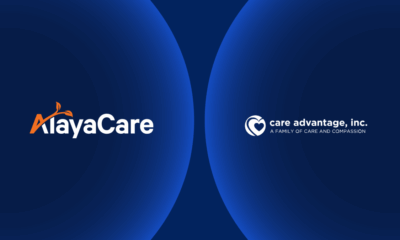
 Medication1 año ago
Medication1 año agoAlayaCare’s Cloud-Based EHR Platform Onboards Home Care Benefits of the Home Care Center
-

 Mental health1 año ago
Mental health1 año agoMiss Gabriella said her husband Thomas made a «sudden» decision to ‘kill himself at his beloved parents’ home’ after suffering a negative reaction to the medication he was prescribed.
-

 Medication1 año ago
Medication1 año agoPCOR awards $156 million in new patient-centered health research
-

 Medication1 año ago
Medication1 año ago5WPR Expands Health and Wellness Divide with New Focus on Functional Nutrition
-

 Medication1 año ago
Medication1 año agoLady Gabriella’s husband ‘killed himself after taking antidepressants’
-
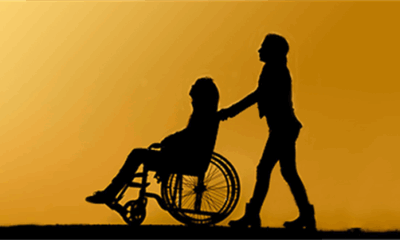
 Health care1 año ago
Health care1 año agoBill would push the VA to expand outside medical care options for vets
